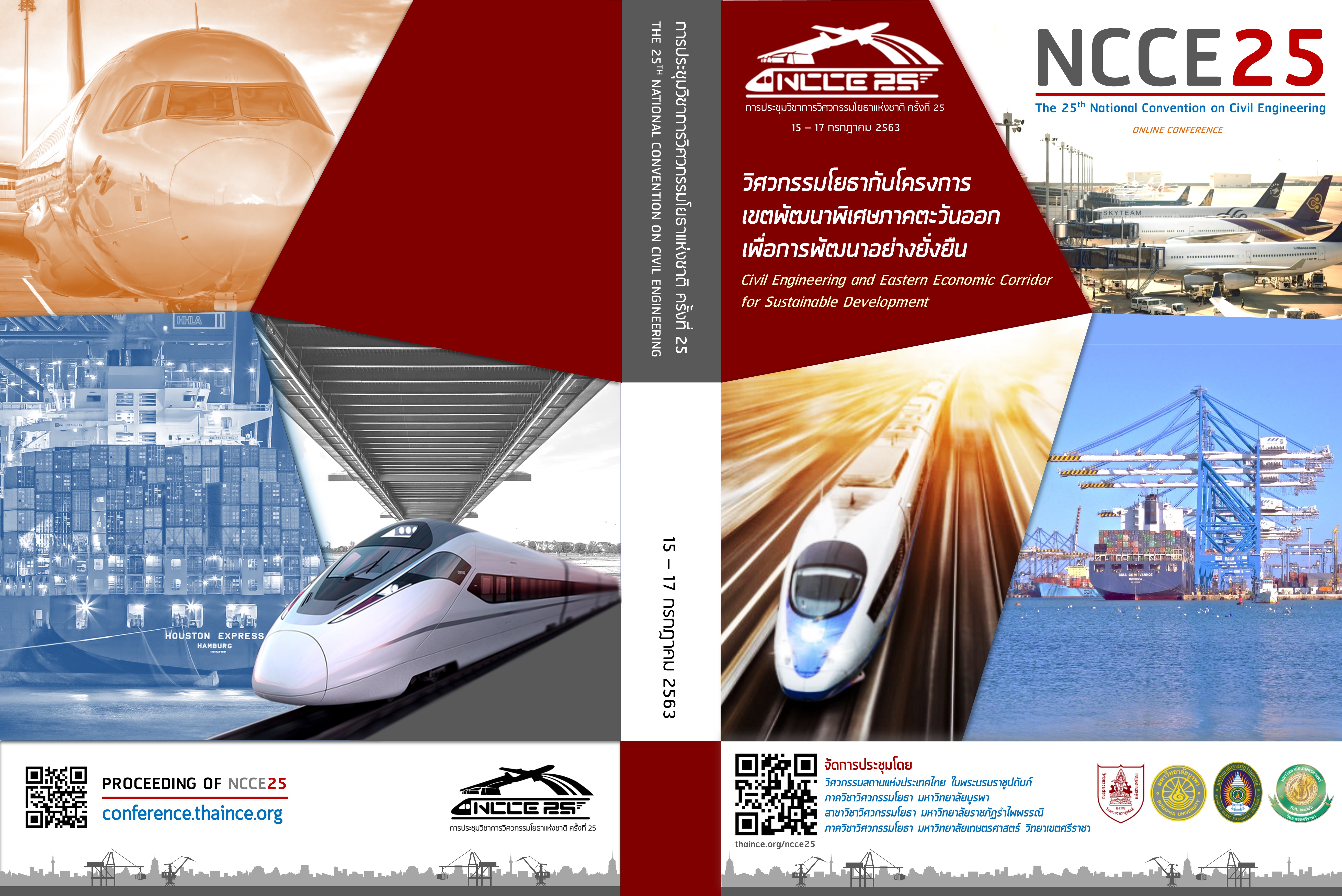Preliminary Feasibility of Utilizing Clay Brick Debris as Partial Replacement for Fine Aggregate and Portland Cement in Concrete Works
Abstract
The purpose of paper is to consider the preliminary feasibility of utilizing clay brick debris as partial substitution of fine aggregate and portland cement. The ground clay brick debris which almost same size distribution as that of sand used as partial fine aggregate. Meanwhile, fine ground clay brick which pass through sieve no.325 is subject to be a partial substituted cementitious material. It was found the 25 percent of sand substitution yielded the higher compressive strength of concrete than that of the control samples since 7 days curing period. The investigation in partial replacement for cement show that 20 percent of ground clay brick substitution speeded up compressive strength equivalent to that of 28 days of the control mortar within 24 hrs. of autoclave conditions. This is probably due to the chemical reaction between crystalline silica of ground clay brick and calcium hydroxide generated from cement hydration under high pressure steam curing leading to increasing in cementitious products.
Downloads
References
[2] Cardoso, F.A., Fernandes, H. C., Pileggi, R.G., Cincotto, M.A., and John, V.M. (2009). Carbide lime and industrial lime characterization. Powder Technology, 195, pp.143-149.
[3] Anderson D., Roy A., Seals R.K., Carledge F.K., Akhter H. and Jones S.C. (2000). A preliminary assessment of the use of an amorphous silica residual as a supplementary cementing material. Cement Concrete Research, 30, 437-445.
[4] Davarz M. and Gunduz L. (2005) Engineering properties of amorphous silica as a new natural pozzolan for use in concrete. Cement Concrete Research, 35, pp. 1251-1261.
[5] Vichan S., Rachan R. and Horpibulsuk, S. (2013). Strength and Microstructure Development in Bangkok clay stabilized with Calcium carbide residue and Biomass ash. Science Asia, 39, pp. 186-193.
[6] Singh, S., Tiwari, A., Nagar, R. and Agrawal V. (2016). Feasibility as potential substitute for natural sand: A comparative study between granite cutting waste and marble slurry. Procedia Environmental Sciences, 35, pp. 571-582.
[7] Balasubramanian, J., Gopal, E. and Periakaruppan, P. (2016). Strength and microstructure of motar with sand substitutes. Gradevinar. 68(1), pp. 41-49.
[8] Jupe, A.C., Wilkinson, A. P., Luke, k. and Funkhouser, G.P. (2008). Class H cement hydration at 180C and high pressure in the presence of added silica. Cement and Concrete Research, 38(5), pp. 660-666.
[9] Luke, K. (2004). Phase studies of pozzolanic stabilized calcium silicate hydrates at 180C. Cement and Concrete Research, 34(9), pp. 1725–1732.
[10] Alawad, O.M., Alhozaimy, A., Jaafar, M.S., Aziz, F. N. A. and Al-Negheimish, A. (2015). Effect of autoclave curing on the microstructure of blended cement mixture incorporating ground dune sand and ground granulated blast furnace slag. Journal of Concrete Structures and Materials, 9(3), pp. 381-390.
[11] Polat, R., Yadollahi, M. M., Aagsoz, A. E. and Arasan., S.(2013). The correlation between aggregate shape and compressive strength of concrete: Digital image processing approach. International Journal of Structural and Civil Engineering Research 2(3), pp. 62–80.
Downloads
Published
How to Cite
Issue
Section
License
บทความทั้งหมดที่ได้รับการคัดเลือกให้นำเสนอผลงานในการประชุมวิชาการวิศวกรรมโยธาแห่งชาติ ครั้งที่ 25 นี้ เป็นลิขสิทธิ์ของ วิศวกรรมสถานแห่งประเทศไทย ในพระบรมราชูปถัมภ์



